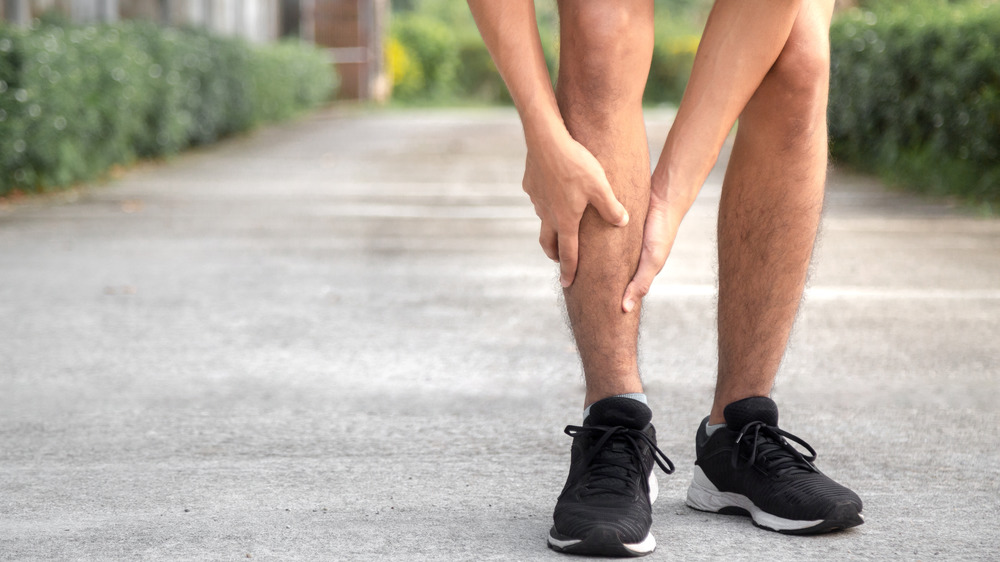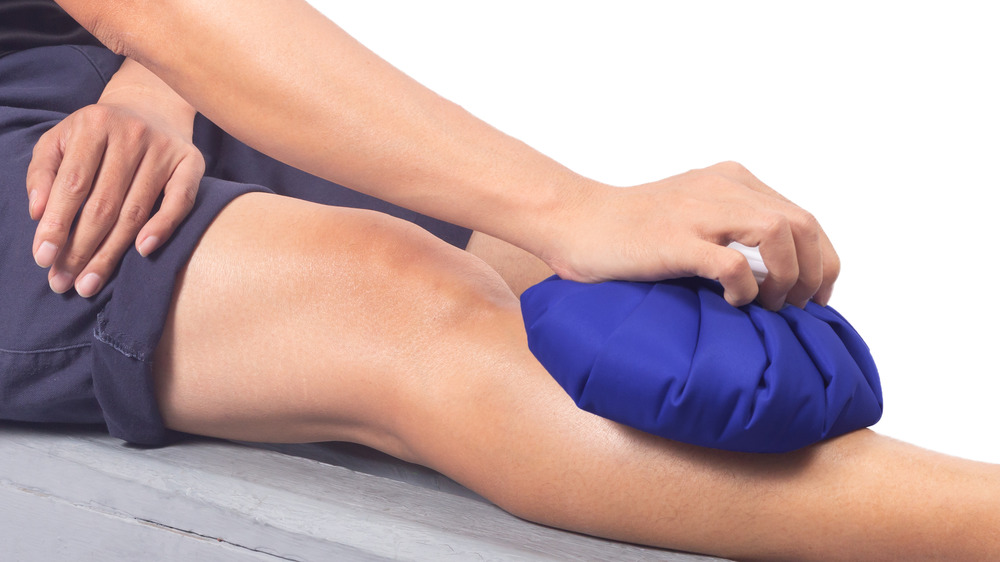Here's Why You Get Shin Splints When Running And How To Prevent Them
Though running as exercise works wonders for your health, there are a few negative impacts associated with the physical activity. One of these negative side effects, especially for new runners, are shin splints, or that nagging pain that's concentrated along the front of the leg (aka your tibia). Often, this pain occurs during and after exercise, according to Runner's World.
There are a number of underlying conditions that cause shin splints, though most cases are the result of an overuse injury caused by small tears in the muscles of the lower leg. In other cases, shin splints can be caused by things such as muscle strain in the key muscles that control the lowering of each foot, tibial stress fractures, Medial Tibial Stress Syndrome, or Exertional Compartment Syndrome (via Runner's World).
Thankfully, for runners of all skill levels, there are many tried and true methods for treating and preventing shin splints.
Rest and relaxation is the key to beating shin splints
Shin splints can typically be treated with a few simple self-care methods, like avoiding activities that cause pain, discomfort, or swelling, along with applying ice to the affected area for 15 to 20 minutes for four to eight times a day until the pain is gone. To relieve the pain and swelling, take an over-the-counter pain reliever like ibuprofen or acetaminophen (via Mayo Clinic).
If you've tried these methods and the pain doesn't subsist, Mayo Clinic says it's best to contact your doctor to see if the pain is caused by a more serious condition, like a stress fracture.
While you're recovering from shin splints, stick to alternative workouts that don't put as much stress on the area, like swimming, walking, and cycling in a lower gear (via Runner's World).
To prevent shin splints from taking you out of the race in the future, it's essential to first learn how to pace yourself. Especially for new runners, pacing yourself (opting to run one mile instead of five) can prevent injuries. Other methods, like cross-training, landing flat on the middle of your foot with each stride — and keeping a shorter stride, at that — and using a supportive shoe that fits you correctly for your arch type can make all the difference (via Men's Journal). In the meantime, a little bit of rest and relaxation can go a long way.

